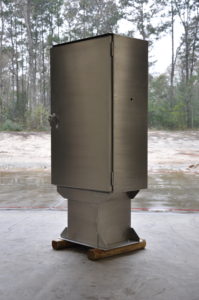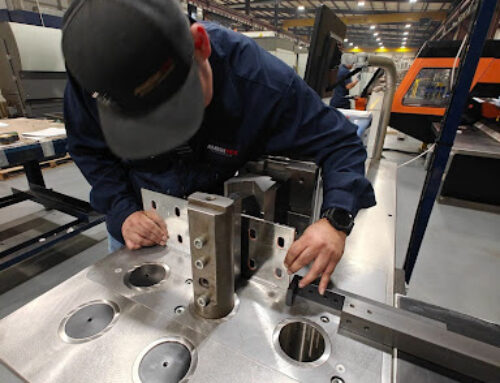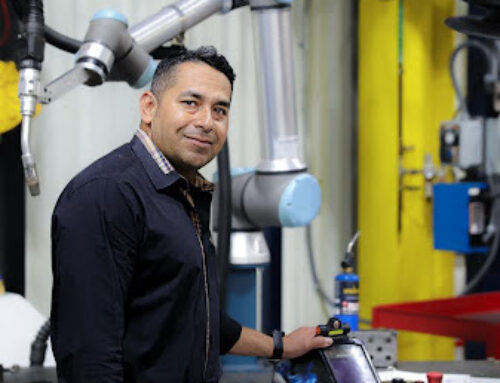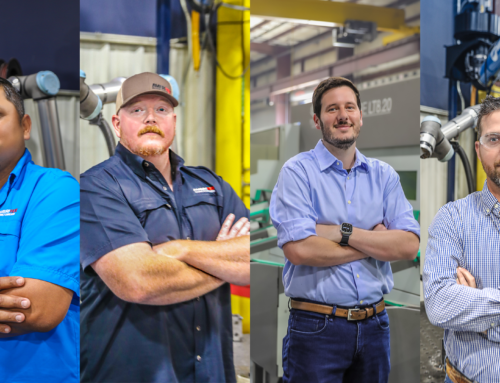When engineers model flat sheet metal components using thin material (think 12 gauge and under), they may not anticipate just how flimsy that material is. Attaching a thin piece of sheet metal with a large surface area to an enclosure or assembly often results in the sheet metal rippling or bowing—and no one wants that.
So, what’s the simplest solution to this common problem? Engineers will usually request a thicker gauge of sheet metal, but there are other ways around this issue that can save you money and get you an even better sheet metal fabricated part.
The Problem with Flat Sheet Metal Components
When you’re designing something like a side panel, cover plate, or access panel, it may look perfectly flat in your model. But when we attach that sheet metal part to an enclosure or assembly, it’s prone to bowing or waviness.

Let’s say you have an access panel that’s going to be bolted around the exterior, and the material is 14 gauge or less. Because it’s such a thin piece of sheet metal, you’re going to see indentations where the bolts fasten the panel to the other components as well as a wavy appearance all the way down the edge.
Cosmetic issues are frustrating enough, but thin, flat sheet metal components can also create serious functionality issues. For example, suppose you’re fastening a cover plate over a gasket for something like an electrical enclosure, and the objective is to prevent water from getting in. The cover may actually bend upward between the bolts and compromise the integrity of the structure.
Using a thicker material that won’t warp is an option, but we usually don’t recommend it. Instead, we can make thin sheet metal sturdier without adding weight to the part. You’ll save money the vast majority of the time, and you’ll get a part that’s lightweight and strong.
3 Ways to Get Sturdier Flat Sheet Metal Parts
There are three approaches we use at Ameritex to make flat sheet metal parts more rigid without adding weight. We recommend including one of these options in your initial design so we can get right to work.
Form some or all of the edges.
When it comes to forming edges, there are a couple of great solutions.
Hemming, one of the most rigid design options, rounds off raw metal edges. It’s ideal for products that will be handled quite a bit, like custom restaurant equipment. The food industry generally requires hemmed edges to prevent exposed crevices that can collect bacteria or cut people.
Alternately, we can add two flanges on all sides of the part to make a nice rigid door. The length of the flanges doesn’t matter as long as they meet our minimum length requirements for the particular thickness; just having them there greatly improves the structural integrity of a panel.
Provide adequate support.
Think about the studs in your wall that support the sheetrock holding together your home. They can be spaced far apart because the sheetrock is thick enough that it won’t bow or ripple. If the sheetrock were significantly thinner, the studs would need to be much closer together.
This same logic applies to a piece of sheet metal. If you’re attaching a flat plate onto another part, it needs adequate supports every 12” to 16”. If that solution isn’t feasible, we’ll need to form the edges or add stiffeners.
Add stiffeners.
If you want to keep your sheet metal component completely flat and it’s over 24”, you’ll need to spot weld, rivet on, or bolt on stiffeners across that length. Stiffeners fasten onto flat panels and add dimension and rigidity, making the flat panel sturdier so that it won’t bend or bow in the middle. Sometimes we’ll use stiffeners along with flanges to create an exceptionally rigid part.
When you’re ready for your next custom metal fabrication, the team at Ameritex is here to get you a high-quality product that won’t bend or bow. Request a quote and let’s get started!




